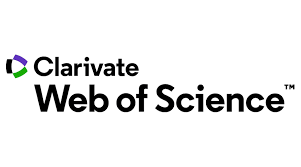Krasnopeyeva Ekaterina S.,
Candidate of Philology,
Associate Professor of the Theory and Practice of Translation Department,
Senior Researcher of the Academic Laboratory for Modern Translation Studies and Innovation in Translation Technology
Chelyabinsk State University
e-mail: krasnopeyeva@gmail.com
https://orcid.org/0000-0002-3503-1849
Kraeva Svetlana S.,
Candidate of Philology,
Associate Professor of the Theory and Practice of Translation Department
Chelyabinsk State University
e-mail: kraeva.svetlana@gmail.com
https://orcid.org/0000-0002-2039-4022
This paper presents a descriptive study based on the collection of retrospective interviews with four interpreters recorded as part of a simulated video-mediated collaborative construction set assembly scenario. The scenario involved a professional interpreter, a Russian-speaking participant acting as an operator, and a native speaker of English, Chinese, or German acting as an instructor. Retrospection recorded after each session is based on a pictorial self-assessment scale that is designed to measure the determinants of mediated presence experience, including attention allocation, and cognitive involvement, among others. Retrospective comments show that interpreters’ attention is divided between the mediated environment and the supplementary materials in the physical environment, i.e. notes, printed and handwritten glossaries. Thus, relevant source data is integrated across different modalities. At the same time, a continuous stream of detailed information and dynamic turn-taking patterns lead to excessive coordination, attention and memory effort, and require note-taking. Although note-taking may afford comprehension and decrease short-term memory load, in a video-mediated scenario it may also impede immersion and the sense of presence.
Keywords: video-mediated communication, attention, cognitive and psychological aspects of interpreting, interpreting studies, remote interpreting
The research was supported by a grant from the Russian Science Foundation (RSF, project No. 23-28-10218,
https://rscf.ru/project/23-28-10218/) and the Chelyabinsk Region
References
- Alikina E.V. Psikhologicheskaia model’ ustnogo posledovatel’nogo perevoda // Sovremennye problemy nauki i obrazovaniia. 2012. No. 6. S. 285.
- Krasnopeeva E.S. Prisutstvie v “meste, kotorogo net”: o kognitivnykh i psikhologicheskikh mekhanizmakh udalennogo ustnogo perevoda // Vestnik Novosibirskogo gosudarstvennogo un-ta. Seriia: Lingvistika i mezhkul’turnaia kommunikatsiia. 2024. T. 22. No. 1. S. 87–104.
- Krasnopeeva E.S., Kraeva S.S. Udalennyi instruktazh kak instrument eksperimental’nogo issledovaniia ustnogo perevoda, oposredovannogo videosviaz’iu // Iazyk i kul’tura v global’nom mire. St. Petersbusg: LEMA, 2023. S. 169–173.
- Serova T.S. Psikhologiia perevoda kak slozhnogo vida inoiazychnoi rechevoi deiatelnosti. Perm: Izd-vo Permskogo gosudarstvennogo tekhnicheskogo un-ta, 2001. 211 s.
- Chistova E.V. Kognitivnyi menedzhment mul’timodal’noi kommunikatsii sinkhronnykh perevodchikov: monografiia. Krasnoiarsk: SFU, 2022. 224 s.
- Biocca F. Lighting a path while immersed in presence: A wayward introduction // Immersed in Media: Telepresence Theory, Measurement & Technology. Cham: Springer, 2015. P. 1–9.
- Braun S. What a micro-analytical investigation of additions and expansions in remote interpreting can tell us about interpreters’ participation in a shared virtual space // Journal of Pragmatics. 2017. Vol. 107. P. 165–177.
- Davitti E. Methodological explorations of interpreter-mediated interaction: Novel insights from multimodal analysis // Qualitative Research. 2019. Vol. 19. No. 1. P. 7–29.
- De Boe E., Vranjes J. Salaets H. About the need for micro-analytical investigations in remote dialogue interpreting // Interactional Dynamics in Remote Interpreting. New York: Routledge, 2024. P. 1–21.
- Gile D. Basic Concepts and Models for Interpreter and Translator Training. Amsterdam, Philadelphia: John Benjamins Publishing, 2009. 283 p.
- Herring R.E., Tiselius E. Making the most of retrospective process tracing in dialogue interpreting research // FITISPos International Journal. 2020. Vol. 7. No. 1. P. 53–71.
- Moser-Mercer B. Remote interpreting: Issues of multi-sensory integration in a multilingual task // Meta. 2005. Vol. 50. No. 2. P. 727–738.
- Mouzourakis P. Remote interpreting: A technical perspective on recent experiments // Interpreting. 2006. Vol. 8. No. 1. P. 45–66.
- Weibel D., Schmutz J., Pahud O., Wissmath B. Measuring spatial presence: Introducing and validating the pictorial presence SAM // Presence: Teleoperators and Virtual Environments. 2015. Vol. 24. No. 1. P. 44–61.
- Wirth W., Hartmann T., Böcking S., Vorderer P., Klimmt C., Schramm H., Saari T., Laarni J., Ravaja N., Gouveia F.R., Biocca F. A process model of the formation of spatial presence experiences // Media Psychology. 2007. Vol. 9. No. 3. P. 493–525.

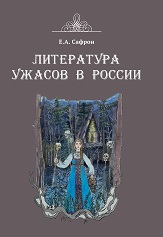
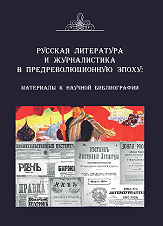
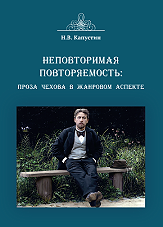
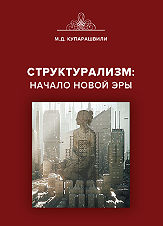
.png)
